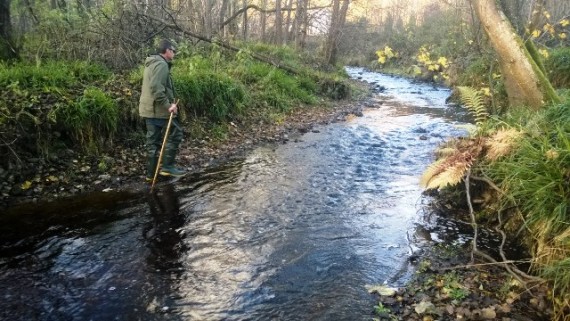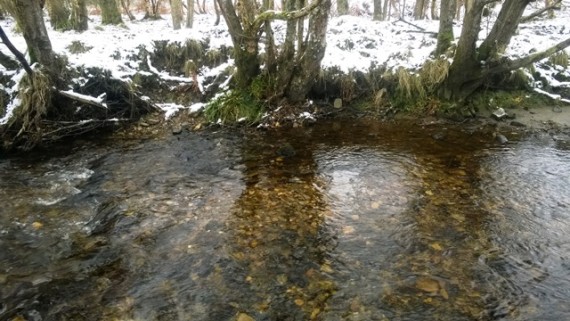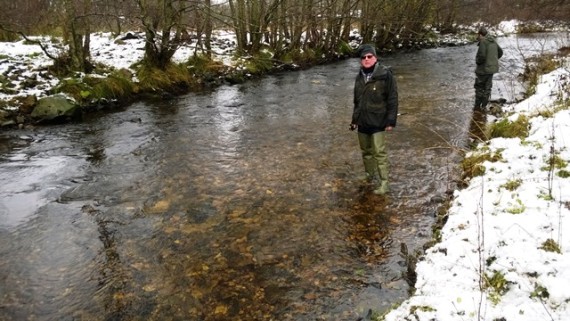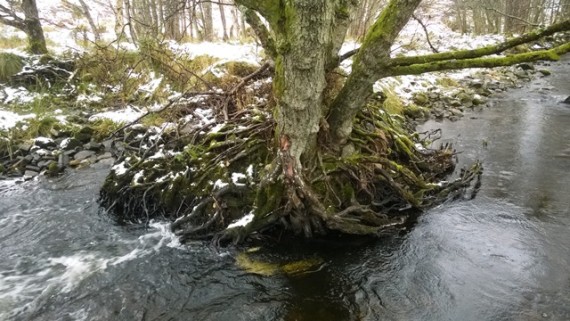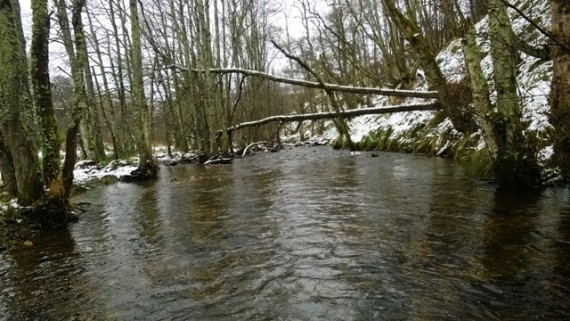I did an interim redd count on a section of the Fiddich recently. I use the term interim as we counted this stretch a week or two later last year, another visit will be made if time permits.
The Fiddich rose slightly the day before the count and there was a tinge of colour but it was still easy enough to count redds. The wee rise had stimulated more spawning activity and there were quite a few fish on redds. I had previously heard from Andy Logan that there was more activity than last year so it was good to get some figures on record.
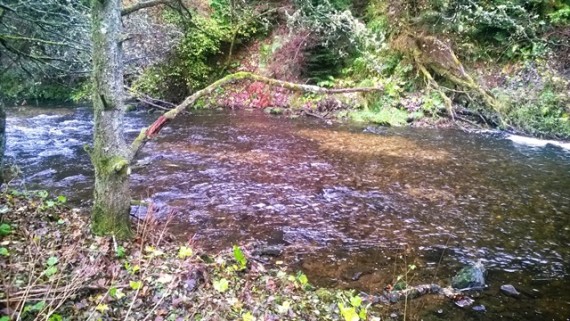
Fiddich redds, unmistakable this year due to the algal growth on the substrate - there hasn’t been a spate in the lower Spey catchment for weeks, if not months. No confusing that big redd in the background for anything other than a salmon redd.
Last years redd count (it is undertaken between two specific points) resulted in a count of 36 redds. This year, to date, there were 66 in the same part of the river. A good increase with a mixture of grilse and big salmon spawning and still time for more. In the equivalent blog last year I mentioned that there were clusters of up to three redds, well this year there were groups of 6/7 in several locations. Some fish seen spawning in areas previously used; better watch out - almost used the “O” word there!
Click here for a short video of a pair on a redd with my dog showing great interest, I don’t think he could see the fish but I’m sure he can smell them!
Steve and myself will be out several days during the next week to count some other areas (weather permitting), if anyone would like to join us just get in touch.
The post Fiddich redd count (interim) appeared first on Spey Fishery Board.
Spey Fishery Board

